Description
Evolution of bitumen rubber seal design over 35 years to excellent performance
Gerrie van Zyl and Gerhard Fourie
ABSTRACT. The use of bitumen rubber in surface treatments in South Africa dates back to 1982. Following several experiments in the former Transvaal Roads Department, guidelines were developed to determine appropriate application rates for bitumen rubber single seals, based on the average least dimension of the aggregate, traffic volume and distribution, as well as the softness and macro texture of the existing substrate. The increased use of this binder resulted in the need to incorporate design guidelines in the National guideline document TRH3 (Design and construction of surfacing seals), published in 1998 and updated in 2007. The principle applied in TRH3 is firstly to determine the residual cold conventional binder application, after which conversion factors are applied for the various available modified binders. Evaluating performance of bitumen rubber seals , constructed during the past fifteen years, resulted in new recommended conversion factors and additional design guidelines. This paper summarizes the evolution of bitumen rubber seal design in South Africa, discusses the development of more appropriate conversion factors for single and multiple stone seal design and quantifies the superior long-term performance of bitumen rubber compared to conventional and polymer modified binders.
KEYWORDS: Sprayed seals, Surface treatments, surface dressings, Bitumen rubber, Design, Performance.

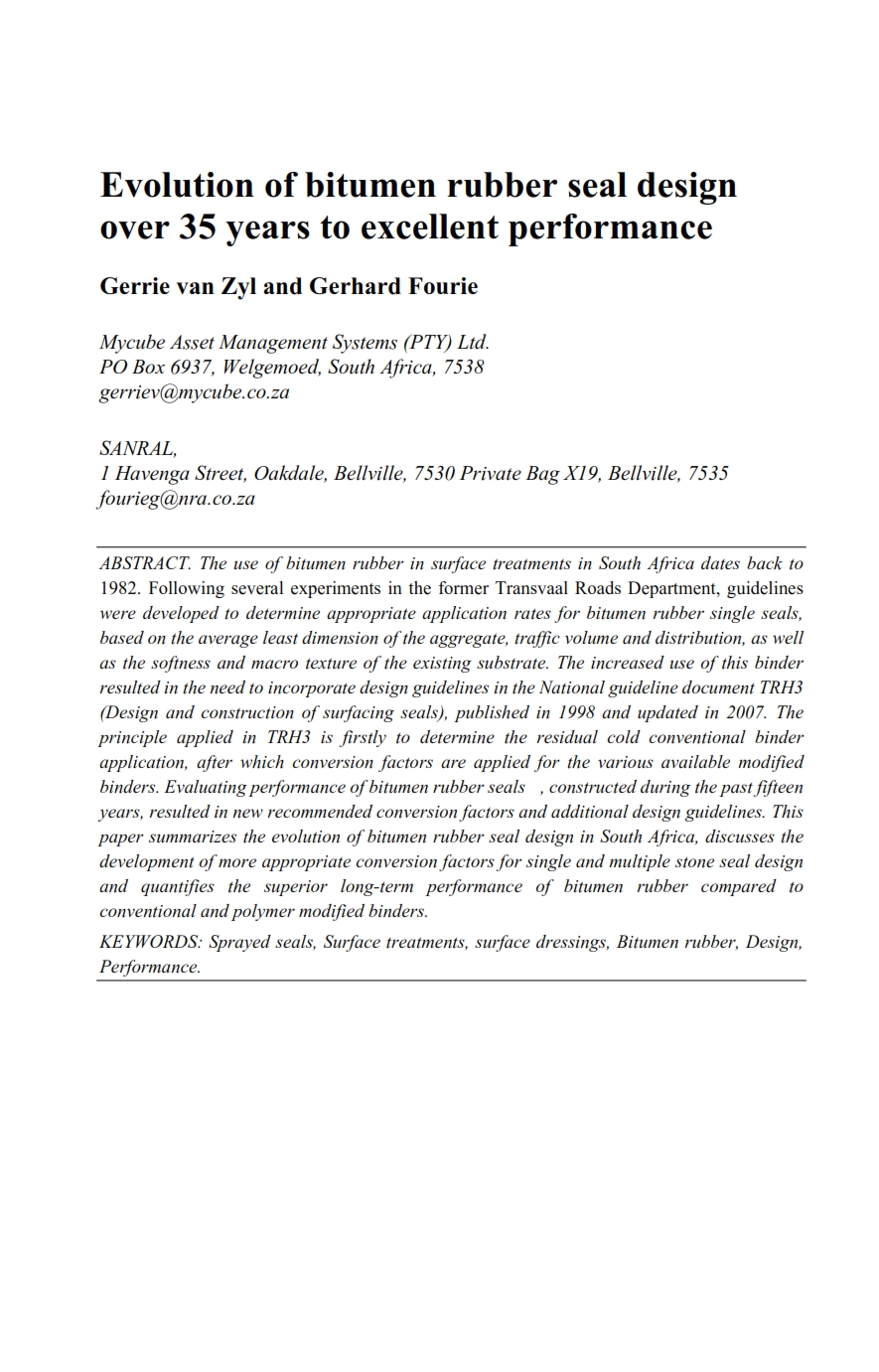
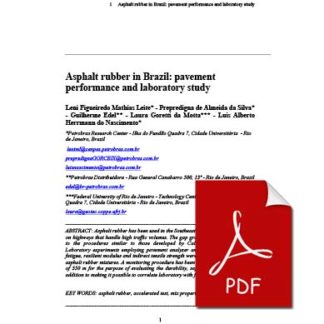
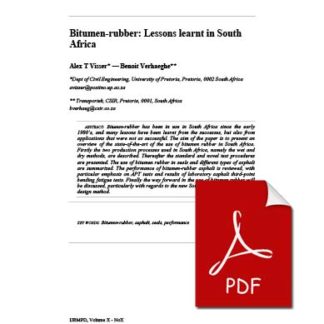
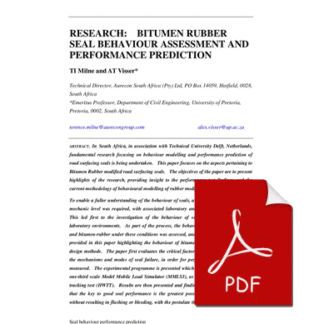


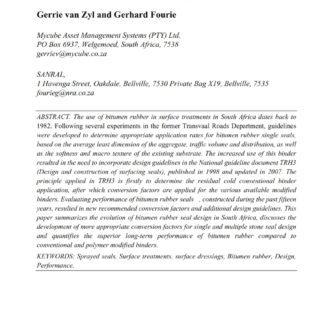
Reviews
There are no reviews yet.